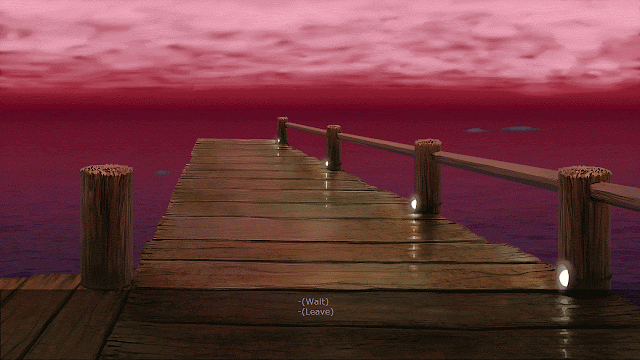Art
This is the July monthly, and it is the final high-effort monthly in my backlog. After this the weekly update art will contain less refined pieces and sketches, and some will have concept sketches of planned future Teraurge content.
Don't worry, it's ok, some of my friends are Nexivians
High resolution
Dev spotlight
The scene constructor is a large and important part of the TU's game engine. It's responsible for setting up the backgrounds and adding the characters on the screen. It is a fairly simple piece of code in theory, since it just needs to layer different images on top of each other. In practice however, as different functions and edge cases pile on top of the base functionality, complexity is inevitable.
 |
| From left to right respectively, sky layer, environment layer, mask layer. |
The very base of the graphics scene is a layer of solid dark purple colour. The first actual layers on top of that are the sky and cloud layers. The clouds are simply two randomly picked black and white images of clouds drawn into perspective with the scene and then set to randomized. The clouds share an opacity percentage, so, if one is at 20% the other will be at 80%.
 |
| Wonderful demonstration of the cloud and color layers from the Teraurge wiki. |
The next layer we're looking at is the environment layer, which is affected by outdoor environment effects. The environment layer is most commonly seen when a scene happens anywhere outdoors. You can also see it when looking out of a window when you're inside of a house. The outdoor effects include the color layers for night, dawn, noon, and dusk, which control the lighting for the outdoor scenes.
The indoor layers, which are also called masks in the game's files, are layers that are not affected by outdoor effects. This layer would depict the interior of a house you're in. These layers can also be replaced automatically with their night versions if necessary. One easy example of a night indoor layer in the game can be seen in the Taodal's market. The mask layers are also used to create lights for night scenes, Taodal's nightly overview picture being an example of that.
The final layer is the character layer which is affected by the outdoor effects, if the scene where the character is encountered in is defined as to happen in an outdoor environment. Because the character layer is above the color layers that define the outdoor color, the outdoor color layers are actually masked into shape of the character and then laid over the sprite to get consistent color on the the character as well. If the scene is not an outdoor scene, the character will be tinted with an environmental ambient color, which is defined in the environment's stats.txt.



Love the work going into this, everything looks great so far!
ReplyDeleteLove you and this game
ReplyDeletei love your character designs, but it wasnt till just now with that gif i realize how great you are at scenery aswell!! the sky looks beautiful!
ReplyDeleteThis comment has been removed by the author.
ReplyDeleteMost impressive game I've come across whilst searching randomly, is there an ETA on the next version release?
ReplyDelete